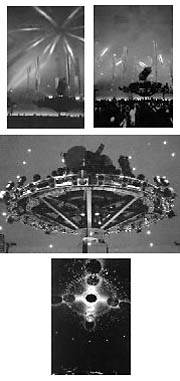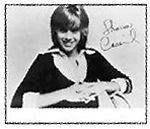During the last two years of high school, I whiled away my weekends at a certain Washington, DC, disco. I’ve seen TGI Fridays that are classier than the Lost & Found in the 17 years since, but at the time it seemed cosmopolitan to a suburban teenager like me.
I didn’t realize that many of the men cruising there on a Saturday night lived in closeted secrecy back in the mall-strewn hinterlands. I had no notion that there were gay clubs that didn’t throb to the foolish beat of inane, crowd-pleasing hits like “So Many Men, So Little Time.” Based on my limited experience, the Lost & Found wasn’t different from any other gay bar.
One thing that kept my partner-in-crime Sebastian and me coming back to the L&F—besides the fact they never questioned our fake IDs—was the balcony overlooking the club’s back deck. Bash and I would spend endless hours surveying potential husbands from above. Our most notorious misadventures occurred up there. During the annual “Trash & Sleaze Ball,” I go-go danced on that balcony’s bar in nothing but a pair of Daisy Dukes and some blue eye shadow.
But I grew to realize that the L&F wasn’t exactly recherch鮠Shortly after discovering my weekend clubhouse, I’d been adopted by a group of guys in their late 20s, and they routinely regaled—and educated—me with tales of their exploits, erotic and otherwise. One time, after returning from a trip to New York City, my buddy Darrin went on and on about his big night out at the Saint. Immediately, everyone chimed in with anecdotes about visits there. The men were gorgeous and horny, the music lush and overwhelming. Their descriptions of the d飯r, a multi-tiered fantasy of staircases and balconies with a towering ceiling filled with dazzling flashes of color, firmly took root in my youthful imagination. I vowed to experience it firsthand someday.
In his new book Keep On Dancin’: My Life and the Paradise Garage (24 Hours for Life Inc.), author Mel Cheren recalls his own first impressions of the Saint: “The dance floor was circular and huge, and above it rose the planetarium dome, diaphanous and semi-transparent, high overhead. When lights were projected onto it the effect was unlike anything you ever saw. Up there you were in a completely other world, a world without angles and walls and restrictions, a circular world where you could whirl like a drugged dervish and swim in sound and light and beauty.”
Like the Lost & Found, the Saint had a balcony, too. But the antics that took place there made my flights of teenage exhibitionism look extremely tame. “The balcony was essentially a big orgy room,” writes Cheren. “Virtually everybody up there was looking for sex, and most were finding it. Then, after trysting up there in heaven, and smoking a dusted joint or snorting some coke, you’d come back down to the dance floor for another round.”
But the AIDS epidemic devastated the membership of the Saint, and it closed in 1988, the year before I arrived in the Big Apple. Almost every day, I’d walk by the boarded up monstrosity on lower Second Avenue, right around the corner from my apartment, and try to imagine the music and sexual energy that had once coursed through it.
But as years passed and I learned the lore surrounding other NYC nightlife landmarks—Paradise Garage, Studio 54— I grew less infatuated with the Saint. Distasteful aspects of the establishment’s legacy were brought to my attention. “The Saint was, I think I can say, a fairly racist organization,” Robbie Leslie, the club’s best-loved DJ, admitted recently. And the only women ever admitted were the female singers imported to entertain the sweat-drenched male audience with their disco hits.
I demonized the Saint because I resented how the hedonistic lifestyle celebrated there fostered the disease that robbed me of growing old with the very men who told me about that club in the first place, men who showed me that being gay was something to be celebrated. When I lost those friends, I lost their stories, and the chance to better understand what made the Saint—and a million other pivotal people, places, and things—important to the development of pre-AIDS gay culture.
A lot of music fans will undoubtedly seek out Keep On Dancin’—which chronicles Cheren’s life in the record business, as co-owner of the disco label West End, and as a financial backer of the Paradise Garage—looking for dirt on Grace Jones or DJ Larry Levan. They’ll find plenty. But I took something different away from this vivid glimpse of gay history: a better sense of the world I lost with my friends. And I’m not bitter about the Saint or the men who celebrated life there anymore.
Now I’m just jealous.






